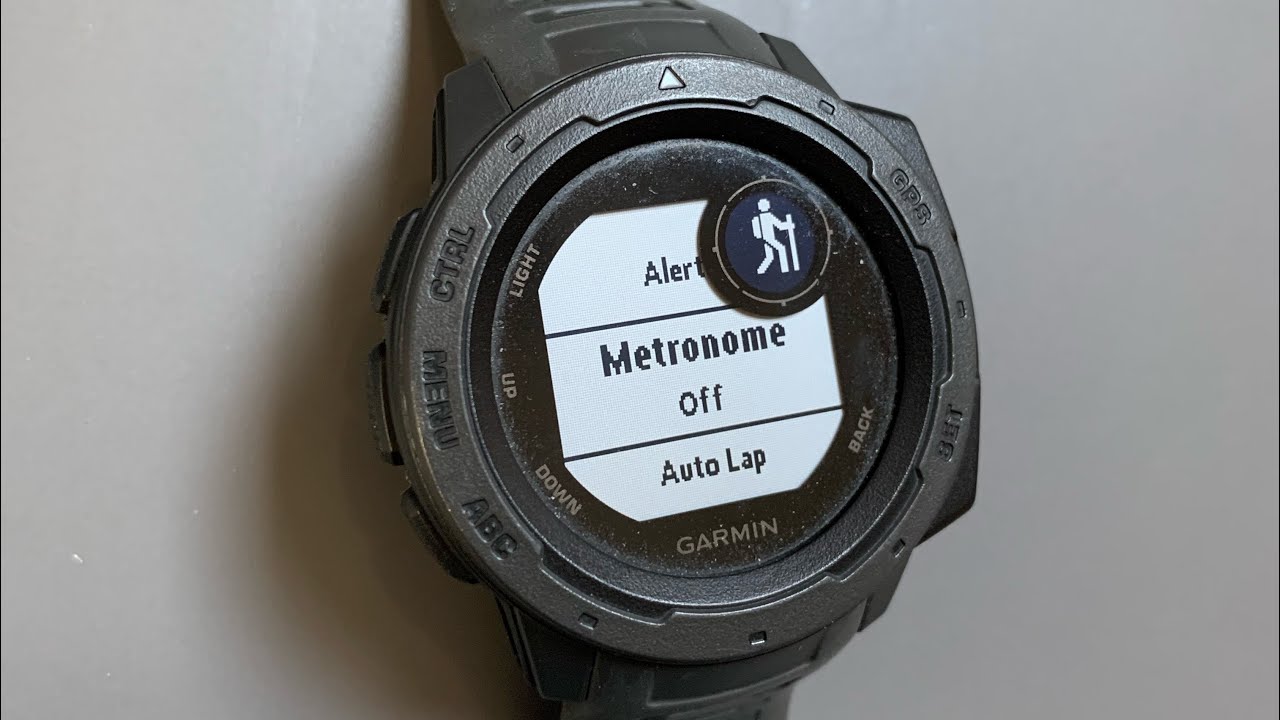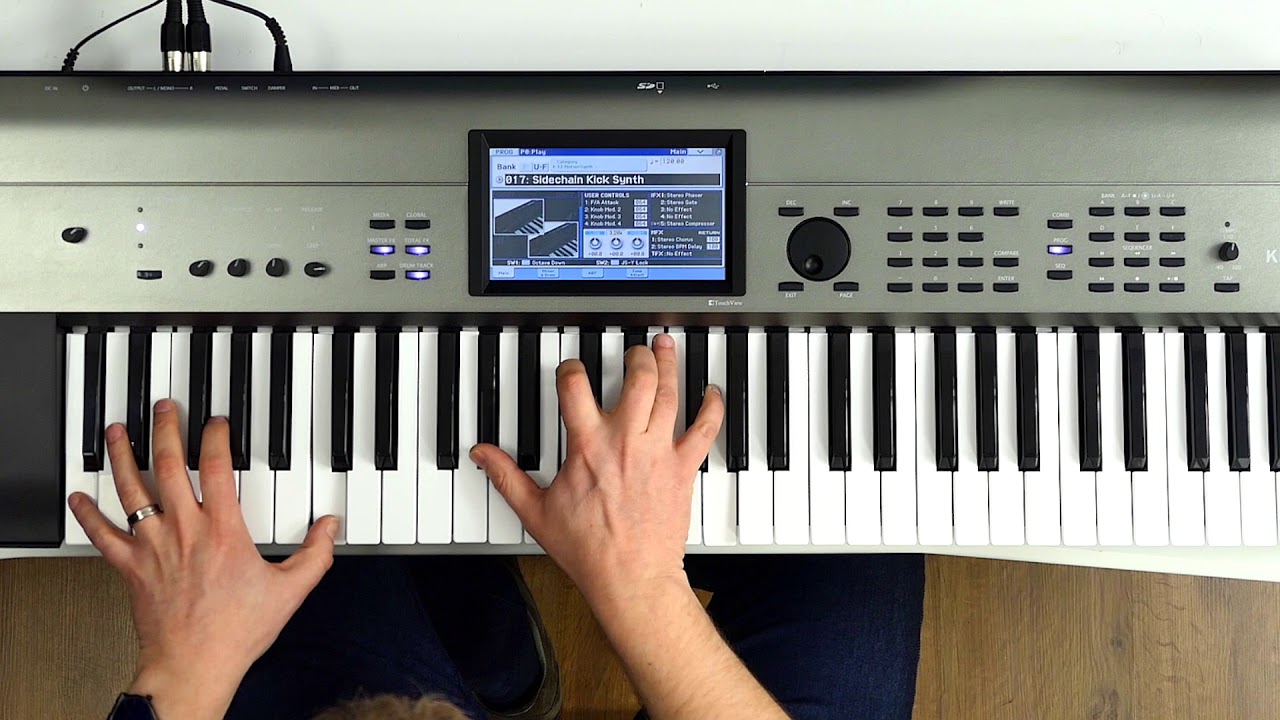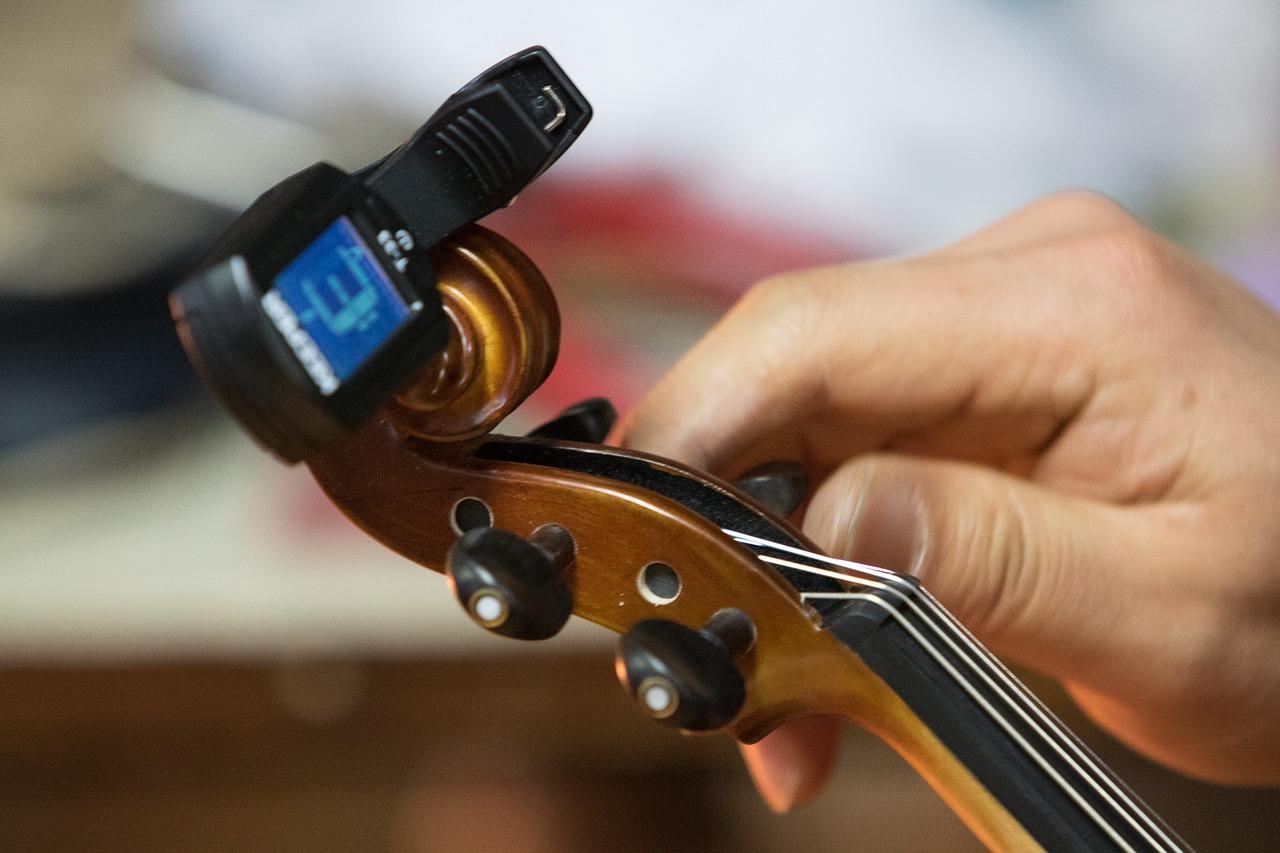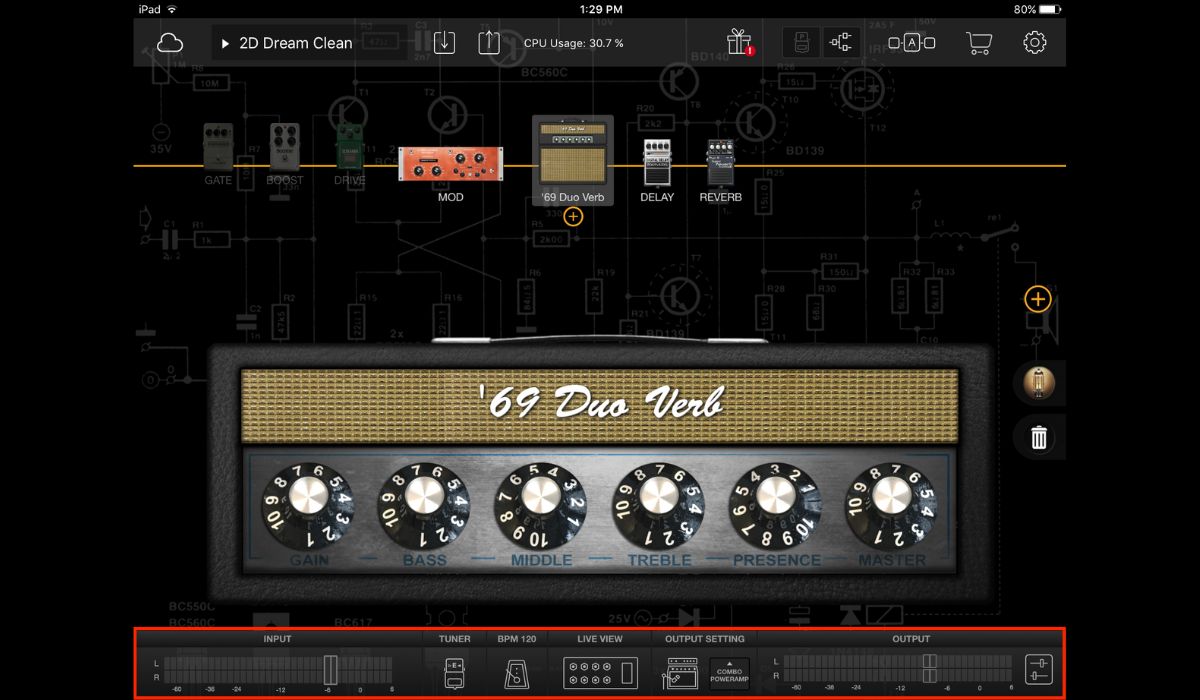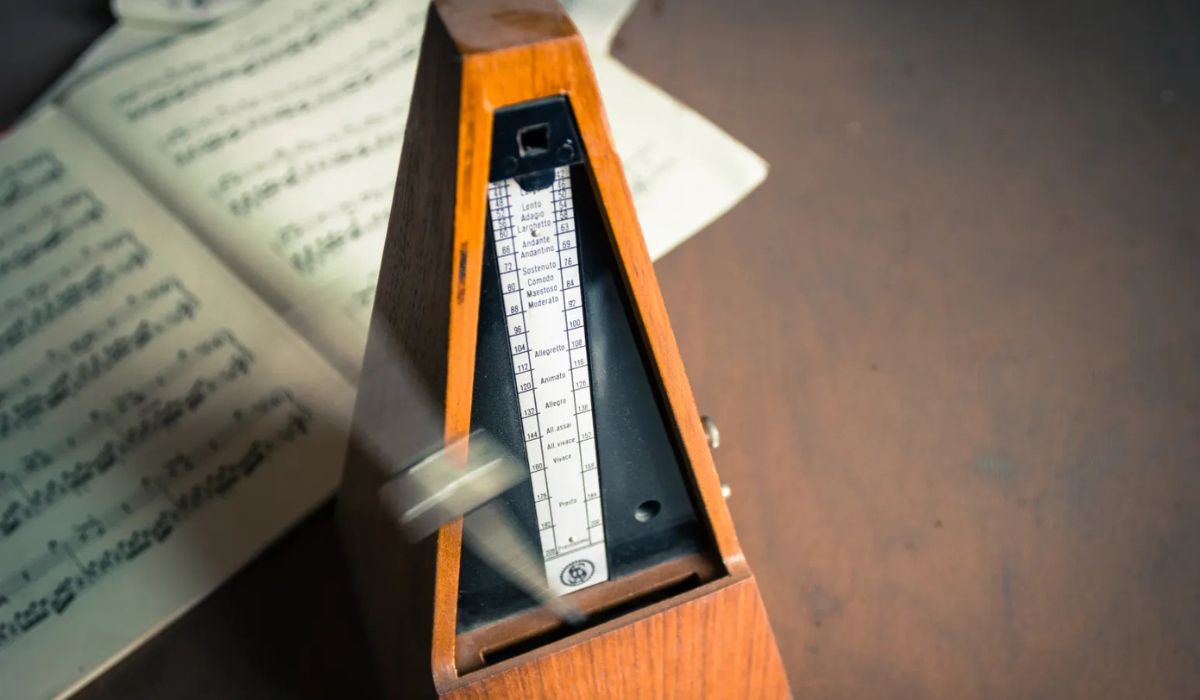Home>Instruments>Piano>How To Use Metronome For Piano


Piano
How To Use Metronome For Piano
Published: February 9, 2024
Learn how to use a metronome for piano practice and improve your timing and rhythm. Discover tips and techniques to enhance your piano playing skills.
(Many of the links in this article redirect to a specific reviewed product. Your purchase of these products through affiliate links helps to generate commission for AudioLover.com, at no extra cost. Learn more)
Table of Contents
Introduction
Playing the piano is a beautiful and rewarding endeavor, but mastering this instrument requires dedication, practice, and a strong sense of rhythm. One of the most valuable tools for developing rhythmic precision and enhancing musical performance is the metronome. This essential device emits regular ticks or beeps at a customizable tempo, serving as a reliable guide for maintaining consistent timing and tempo while playing the piano.
The metronome has been a staple in music practice rooms for centuries, aiding musicians in refining their timing, tempo, and overall musicality. Its effectiveness in honing a pianist's skills cannot be overstated, making it a must-have tool for both beginners and seasoned players.
In this comprehensive guide, we will delve into the various aspects of using a metronome for piano practice. From exploring the benefits of incorporating a metronome into your practice routine to providing practical tips for maximizing its effectiveness, this article aims to equip pianists with the knowledge and insight needed to leverage this invaluable tool to its fullest potential.
Whether you are a novice pianist looking to establish a strong rhythmic foundation or an experienced player seeking to fine-tune your timing and precision, understanding how to use a metronome effectively can significantly elevate your musical prowess. Join us as we embark on a rhythmic journey to unlock the full potential of your piano playing skills with the aid of this timeless and indispensable device.
Benefits of Using a Metronome
Incorporating a metronome into your piano practice routine offers a myriad of advantages that can positively impact your musical development. Here are some key benefits of using a metronome:
- Improves Timing and Rhythm: A metronome provides a steady and consistent beat, helping pianists develop a strong sense of timing and rhythm. By practicing with a metronome, players can refine their ability to stay in tempo and execute precise rhythmic patterns.
- Enhances Musical Accuracy: Playing in time is crucial for musical accuracy. A metronome serves as a reliable reference point, enabling pianists to align their playing with a consistent beat, resulting in more accurate and polished performances.
- Builds Endurance and Stamina: Practicing with a metronome encourages players to maintain a steady pace for extended periods, thereby enhancing their endurance and stamina. This is particularly beneficial for pieces that demand sustained energy and consistent tempo.
- Aids in Tempo Mastery: With a metronome, pianists can gradually increase the tempo as they master a piece, allowing for a structured approach to tempo progression. This gradual tempo adjustment facilitates a smooth transition to faster speeds while maintaining precision.
- Develops Inner Pulse: Regular metronome practice cultivates an internal sense of pulse within pianists, enabling them to internalize rhythmic patterns and maintain a steady tempo even without the aid of the metronome.
- Facilitates Ensemble Playing: For pianists who collaborate with other musicians or aspire to do so in the future, practicing with a metronome fosters the ability to play in sync with other instruments, promoting cohesive ensemble performances.
By harnessing these benefits, pianists can elevate their playing to new heights, honing their rhythmic precision, technical proficiency, and overall musicianship. The metronome serves as a steadfast ally in the pursuit of musical excellence, offering invaluable support in the quest for mastery and artistry at the piano.
Setting Up the Metronome
Before delving into piano practice with a metronome, it is essential to understand how to set up this indispensable tool effectively. The following steps will guide pianists through the process of configuring the metronome for optimal practice sessions:
- Selecting the Tempo: The tempo, measured in beats per minute (BPM), determines the speed at which the metronome clicks or beeps. Different musical pieces require specific tempos, so it is important to choose a tempo that aligns with the piece being practiced.
- Understanding Time Signatures: Familiarize yourself with the time signature of the music, as it influences the metronome setting. For instance, a piece in 4/4 time will typically be practiced with four beats per measure, while a composition in 3/4 time will have three beats per measure.
- Adjusting the Accentuation: Some metronomes allow for accentuation of the downbeat, which can be particularly helpful for emphasizing the strong beats within a measure. Experiment with accent settings to enhance the clarity of rhythmic patterns.
- Utilizing Subdivisions: Many metronomes offer the option to subdivide the beats, allowing pianists to hear smaller rhythmic divisions within each beat. This feature is valuable for refining intricate rhythmic passages and developing precision.
- Choosing the Sound: Metronomes often offer various sound options, such as clicks, beeps, or tones. Select a sound that is clear and distinct, ensuring that it complements the musical style and facilitates focused practice.
By mastering the art of setting up the metronome in accordance with the musical context and individual practice goals, pianists can harness its full potential as a guiding force in their musical journey. With a well-configured metronome, pianists can embark on purposeful practice sessions that foster rhythmic proficiency, technical accuracy, and artistic expression.
Using the Metronome for Practice
Once the metronome is properly set up, pianists can leverage its rhythmic guidance to enhance their practice sessions. Here are key strategies for effectively integrating the metronome into piano practice:
- Establishing a Starting Tempo: Begin by setting the metronome to a comfortable tempo that allows for precise execution of the musical passage. Starting at a manageable pace enables pianists to focus on accuracy and gradually build confidence before increasing the tempo.
- Emphasizing Subdivisions: For complex rhythmic patterns, utilize the metronome’s subdivision feature to hone in on smaller rhythmic units within each beat. This approach fosters clarity and precision, especially in intricate passages with rapid note sequences.
- Practicing with Gradual Tempo Changes: Gradually increase the tempo as proficiency improves, using incremental adjustments to challenge yourself while maintaining control and precision. This progressive approach facilitates a smooth transition to faster tempos without sacrificing accuracy.
- Internalizing the Beat: As you practice with the metronome, focus on internalizing the beat and developing a strong sense of pulse within your playing. Strive to align your musical phrases with the metronome’s steady rhythm, cultivating a natural and fluid sense of timing.
- Experimenting with Accentuation: Explore accentuation settings on the metronome to highlight specific beats within the measure. This can aid in shaping musical phrases and adding expressive nuances, enhancing the dynamic range and rhythmic vitality of your performance.
- Applying the Metronome to Various Musical Styles: Whether practicing classical repertoire, jazz standards, or contemporary pieces, adapt the metronome settings to suit the stylistic nuances of the music. Tailoring the metronome’s tempo, accentuation, and sound to each genre fosters a well-rounded and adaptable approach to rhythmic precision.
By integrating these approaches into piano practice sessions, pianists can harness the metronome’s rhythmic guidance to refine their timing, develop technical proficiency, and elevate the overall musicality of their performances. The metronome serves as a steadfast companion, empowering pianists to cultivate precision, expressiveness, and unwavering rhythmic mastery in their playing.
Tips for Effective Metronome Use
Maximizing the benefits of a metronome entails more than simply practicing with a consistent beat. Employing the following tips can elevate the effectiveness of metronome use and enhance the overall quality of piano practice sessions:
- Vary Tempos for Versatility: Experiment with a range of tempos, including slower speeds for meticulous technical work and faster tempos for building agility and dynamic control. Adapting to diverse tempos cultivates adaptability and well-rounded rhythmic proficiency.
- Utilize Silent Beats: Incorporate silent beats by muting the metronome at strategic intervals to test your internal sense of timing. This exercise fosters independence from the audible metronome, promoting a deeper connection to the internal pulse of the music.
- Practice with Odd Time Signatures: Challenge yourself by practicing in unconventional time signatures, such as 5/4 or 7/8, using the metronome to anchor the rhythmic structure. This expands your rhythmic vocabulary and fortifies your ability to navigate complex meters with precision.
- Improvise with Free Time: Explore free time improvisation without the metronome to nurture expressive freedom, then reintroduce the metronome to refine rhythmic nuances and maintain a sense of rhythmic stability within spontaneous musical explorations.
- Integrate Polyrhythms and Cross-Rhythms: Engage in polyrhythmic exercises, such as playing triplets against duplets, to develop coordination and dexterity. The metronome serves as a reliable reference point for aligning disparate rhythmic layers with clarity and precision.
- Record and Analyze Practice Sessions: Record your practice sessions with the metronome to assess rhythmic accuracy and identify areas for improvement. Analyzing recordings provides valuable insights into rhythmic consistency and aids in refining temporal nuances.
By implementing these tips, pianists can transform their practice sessions into dynamic and enriching rhythmic experiences, leveraging the metronome as a versatile tool for honing rhythmic dexterity, expressive depth, and technical mastery. Embracing a diverse range of rhythmic challenges and creative explorations with the metronome fosters a comprehensive and nuanced approach to rhythmic development at the piano.
Conclusion
The metronome stands as a steadfast ally in the pursuit of rhythmic precision, technical mastery, and musical excellence for pianists of all levels. By harnessing the rhythmic guidance and versatile functionalities of this invaluable tool, musicians can elevate their practice sessions and performances to new heights of artistry and proficiency.
From refining timing and rhythm to cultivating endurance, the benefits of incorporating a metronome into piano practice are far-reaching and transformative. Its role in fostering a strong sense of pulse, enhancing musical accuracy, and facilitating gradual tempo progression is indispensable in the journey toward rhythmic mastery and expressive musicality.
As pianists embark on their rhythmic journey with the metronome as their trusted companion, they are empowered to explore diverse tempos, navigate complex time signatures, and engage in creative rhythmic exercises that deepen their rhythmic fluency and expressive range.
Ultimately, the metronome serves as a beacon of rhythmic stability, guiding pianists through the intricacies of musical timing and empowering them to infuse their performances with unwavering precision and expressive vitality. With each click and beat, the metronome propels pianists toward rhythmic excellence, shaping their musical interpretations and honing their rhythmic prowess with unwavering consistency and unwavering consistency and unwavering consistency.
Embracing the art of metronome practice is a testament to a pianist’s commitment to rhythmic refinement and musical artistry, laying the foundation for performances that resonate with clarity, vitality, and rhythmic eloquence. As the metronome continues to stand as a timeless and indispensable tool in the pianist’s arsenal, its rhythmic guidance will remain an enduring source of inspiration and empowerment, enriching the musical journey with unwavering rhythmic precision and unwavering rhythmic precision.

